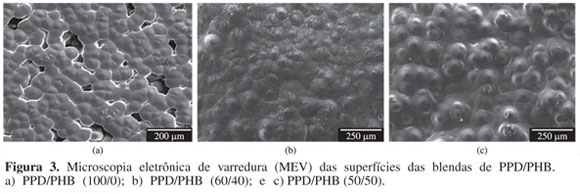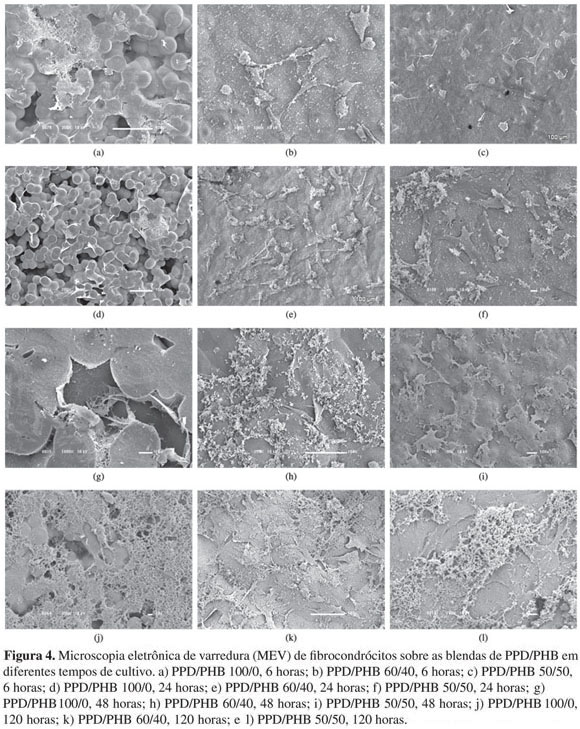Buscando estratégias que repercutam na melhoria da interação entre materiais poliméricos biorreabsorvíveis e o crescimento celular, o presente estudo in vitro teve como objetivo estudar a influência de blendas de PPD/PHB na adesão celular e crescimento de fibrocondrócitos obtidos a partir de cultura primária. As blendas de PPD/PHB foram preparadas pelo método de evaporação de solvente nas composições 100/0, 60/40 e 50/50 e caracterizadas por microscopia eletrônica de varredura (MEV). Observações ultra-estruturais mostraram alterações na morfologia celular, sugerindo que os fibrocondrócitos podem responder a alterações no substrato alterando seu perfil fenotípico. As análises com MTT demonstraram que as blendas não apresentaram citotoxicidade e permitiram a adesão e proliferação dos fibrocondrócitos sobre os substratos em todas as suas composições. O ensaio colorimétrico com Sirius Red evidenciou a capacidade de manutenção da síntese de matriz extracelular colágena sobre as amostras, concluindo-se que as blendas de PPD/PHB podem ser indicadas para o cultivo celular.
Blenda; poli(p-dioxanona); poli(hidroxi butirato); fibrocondrócitos





